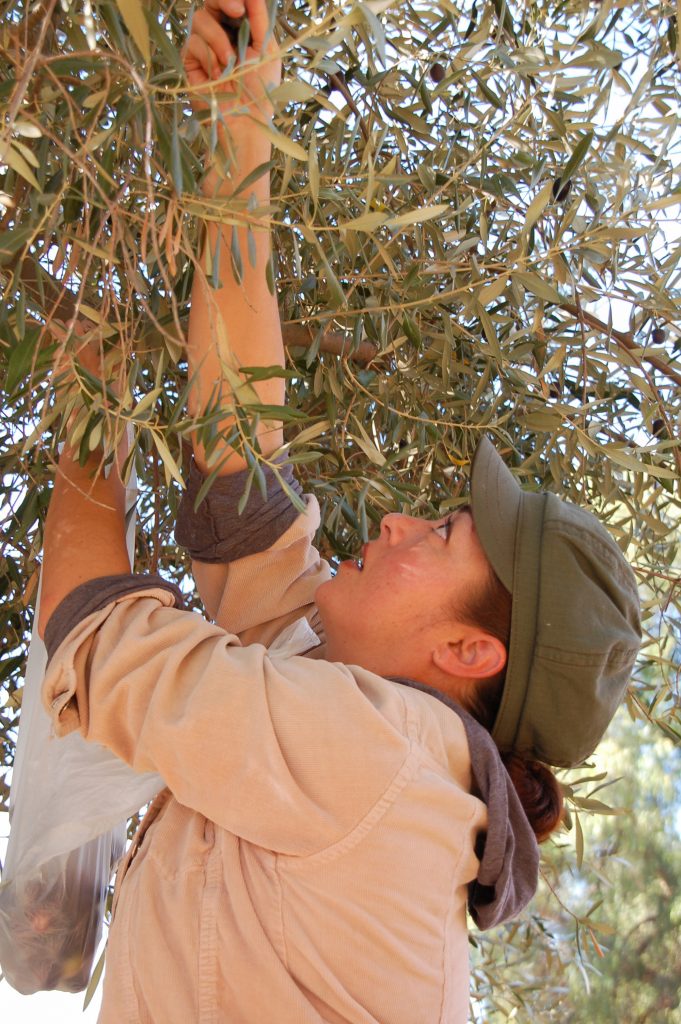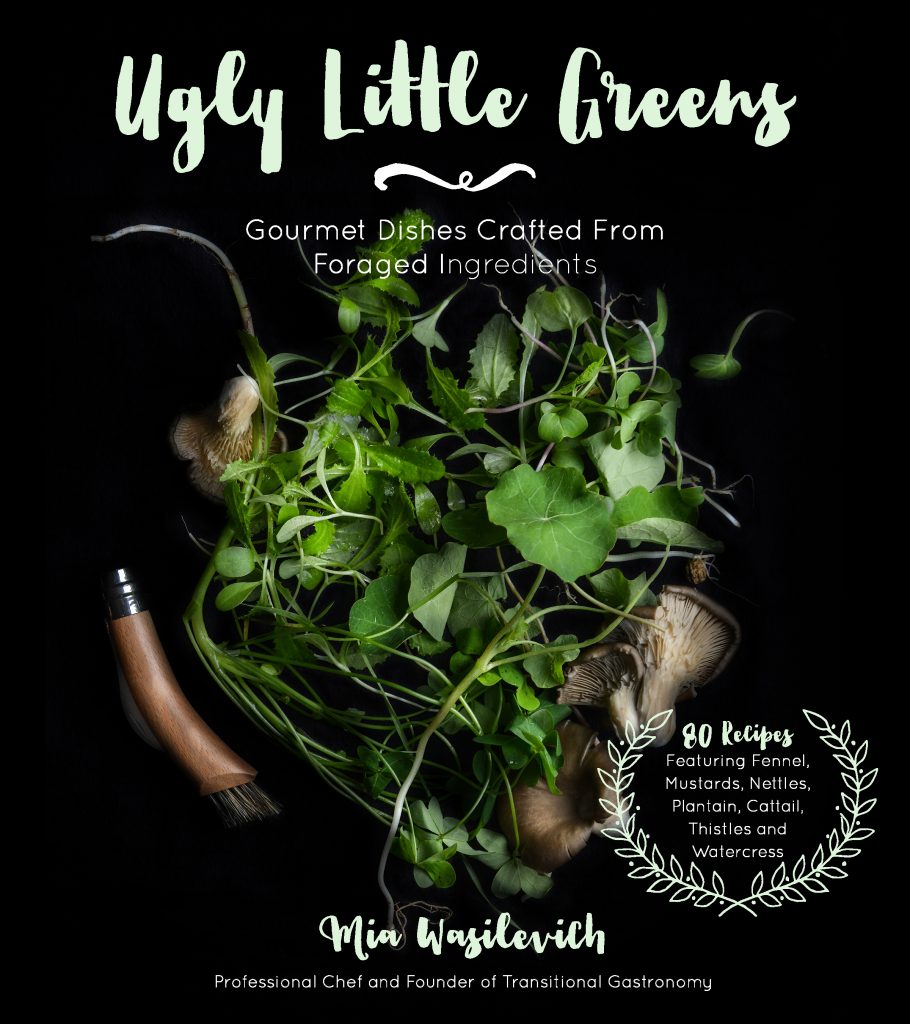I’m fortunate to live in a city rich in truly wonderful human beings and even luckier to call some of those people my friends. One such person is Chef Mia Wasilevich of Transitional Gastronomy. A true Renaissance Woman, she forages, she cooks, she creates, photographs, and emits a ray of sunshine when you’re in her presence.
As the world seems to be in a state of chaos, I wanted to center myself and encourage all of you to do the same. One of my favorite ways to do that is through cooking and food. Eating and playing with ingredients is a constant source of inspiration and unending education, and Mia is one of the greatest resources for both.
With a new book out, Ugly Little Greens, we all have an opportunity to get a look at the incredible knowledge she has on the natural elements surrounding us. With a desire to be self-reliant and sustainably conscious, she is one of the few people I know that spend their days foraging, igniting culinary curiosity and implementing that into tangible recipes.
The recipes below are your invitation to explore outside and get your cook on!
[separator type=”thin”] [infobox maintitle=”NETTLE CHIMICHURRI + CHIPAS” subtitle=”Nettle and Herb Sauce with Tapioca Puffs | Serves: 4–6 | Difficulty level: Easy” bg=”gray” color=”black” opacity=”off” space=”30″ link=”no link”] [columns_row width=”half”] [column]NETTLE CHIMICHURRI
INGREDIENTS
4 cups (60 g) densely packed nettles
2 tbsp (10 g) finely chopped fresh parsley
1 clove garlic, minced
⅛ tsp coarsely ground dried bay leaf
1 tbsp (5 g) finely chopped fresh oregano
⅛ tsp red pepper flakes
¼ cup (60 ml) olive oil
1 tbsp (15 ml) rice vinegar
Sea salt, to taste
[/column] [column] [/column]
[/columns_row]
[/column]
[/columns_row]
INSTRUCTIONS
In a medium stockpot over high heat, blanch the nettles in moderately salted water for 2 to 3 minutes. You want to cook them just long enough to remove the “sting.” Drain the nettles, let them cool and then gently wring the water out by placing them in a clean kitchen towel and very gently squeezing the remainder of the water out. Chop the nettles finely and set aside. In a medium bowl, combine the nettles, parsley, garlic, bay leaf, oregano, red pepper flakes, olive oil, vinegar and salt and let the chimichurri refrigerate overnight. This recipe makes about 1 cup (240 ml) to 1 ¼ cups (300 ml). If you’d like it a thinner chimichurri, add more oil and vinegar. Use this chimichurri as a pesto, use it as a spread for sandwiches, toss your veggies in it, slather it on toast or drizzle it over eggs or grilled meats. It’s pretty much good with anything.
Note: This chimichurri recipe can be adapted to any edible wild greens. Nettles just happen to be my favorite and really do lend the most flavor.
[separator type=”thin”][separator type=”thin”] [columns_row width=”half”] [column]Chimichurri seems to pop up in a slew of countries in the form of salsa verde, pistou, sauce verte, Grüne Soße, and many more. While there are a multitude of interpretations, this one is from my Argentinian heritage.
CHIPAS
INGREDIENTS
½ cup (120 ml) coconut milk or cow’s milk
¼ cup (60 ml) olive oil
1 cup (113 g) tapioca flour or manioc flour
¼ cup (25 g) shredded ParmigianoReggiano or Parmesan
½ cup (50 g) shredded Queso Holandita (or any type of Edam cheese)
1 large egg, beaten
Sea salt, to taste
[/column] [column]ORDER THE BOOK
[button content=”BUY ” color=”white” text=”black” url=”https://www.amazon.com/Ugly-Little-Greens-Gourmet-Ingredients/dp/1624143873/ref=as_li_ss_il?ie=UTF8&linkCode=li2&tag=dawngarciaato-20&linkId=f7c261f5722e57d4fc2bbf8d99dc5909″ openin=”_blank”]
 [/column]
[/columns_row]
[/column]
[/columns_row]
INSTRUCTIONS
CHIPAS Preheat the oven to 450°F (232°C) if you will be baking the chipas the same day you make them. Combine the coconut milk and oil in a small saucepan over medium heat. Whisk the mixture and bring it to a simmer. Take the saucepan off the heat. Let the coconut milk mixture cool for 5 to 7 minutes. While it’s still quite warm, whisk in the tapioca flour off the heat until the mixture forms a thick paste. Let this mixture cool completely. Transfer the cooled tapioca mixture to a food processor and process for 2 to 3 minutes. Then add the Parmigiano-Reggiano and Queso Holandita and process for 1 more minute, then add the egg and process until the mixture forms a dough ball.
If it’s still crumbly and not a smooth dough, add a few drops of hot water while processing until a smooth, shiny, sticky dough forms. Remove the dough from the processor. On a large baking sheet line with parchment paper, roll about 20 balls of dough a little smaller than a golf ball, oiling your hands slightly between rolling each chipa. Place the chipas at least 1 inch (3 cm) apart, as they will expand while baking. Cover the baking sheet with oiled plastic wrap and let the chipas chill in the refrigerator for at least 20 minutes or up to overnight. Let the baking sheet it sit out at room temperature for 10 minutes before baking if you let the chipas chill overnight. If you’ve let the chipas chill overnight, preheat the oven to 450°F (232°C) while the chipas are warming up.
Place the baking sheet of chipas on the oven’s middle rack. Turn down the heat immediately to 350°F (177°C) and bake the chipas for 12 to 15 minutes. Don’t open the oven. These are going to take longer than you would think. After 12 minutes, check on them. They should be a little golden on the top and bottom and you should be able to see little browned-cheese specks. They are not going to get super brown, as tapioca flour doesn’t darken too much. If after 12 minutes the chipas are not browned even slightly, continue baking for up to 5 to 7 minutes. Note: You can use an egg wash, but a very light one. If you do use an egg wash, dilute it a little with cream or milk and when brushing, try not to let it drop on the pan. Just brush the tops lightly. The high temperature of the oven can burn the egg. Remove the chipas from the oven and let them cool slightly on a wire rack and then be prepared for the stampede. It’s OK if you pop a few in your mouth when no one is looking. Enjoy with some yerba mate, white fir tea and the chimichurri. Note: This chimichurri recipe can be adapted to any edible wild greens. Nettles just happen to be my favorite and really do lend the most flavor.
[columns_row width=”third”] [column]


ABOUT MIA
Mia Wasilevich is a chef, forager, wildcrafter, artist, educator, photographer and food stylist currently residing in Los Angeles, California. She loves a good collaboration that combines food, art and nature. While working as a full food stylist, Mia teaches classes and created bespoke culinary events and art/food installations. Her new passion is studying herbalism and exploring food as medicine.





